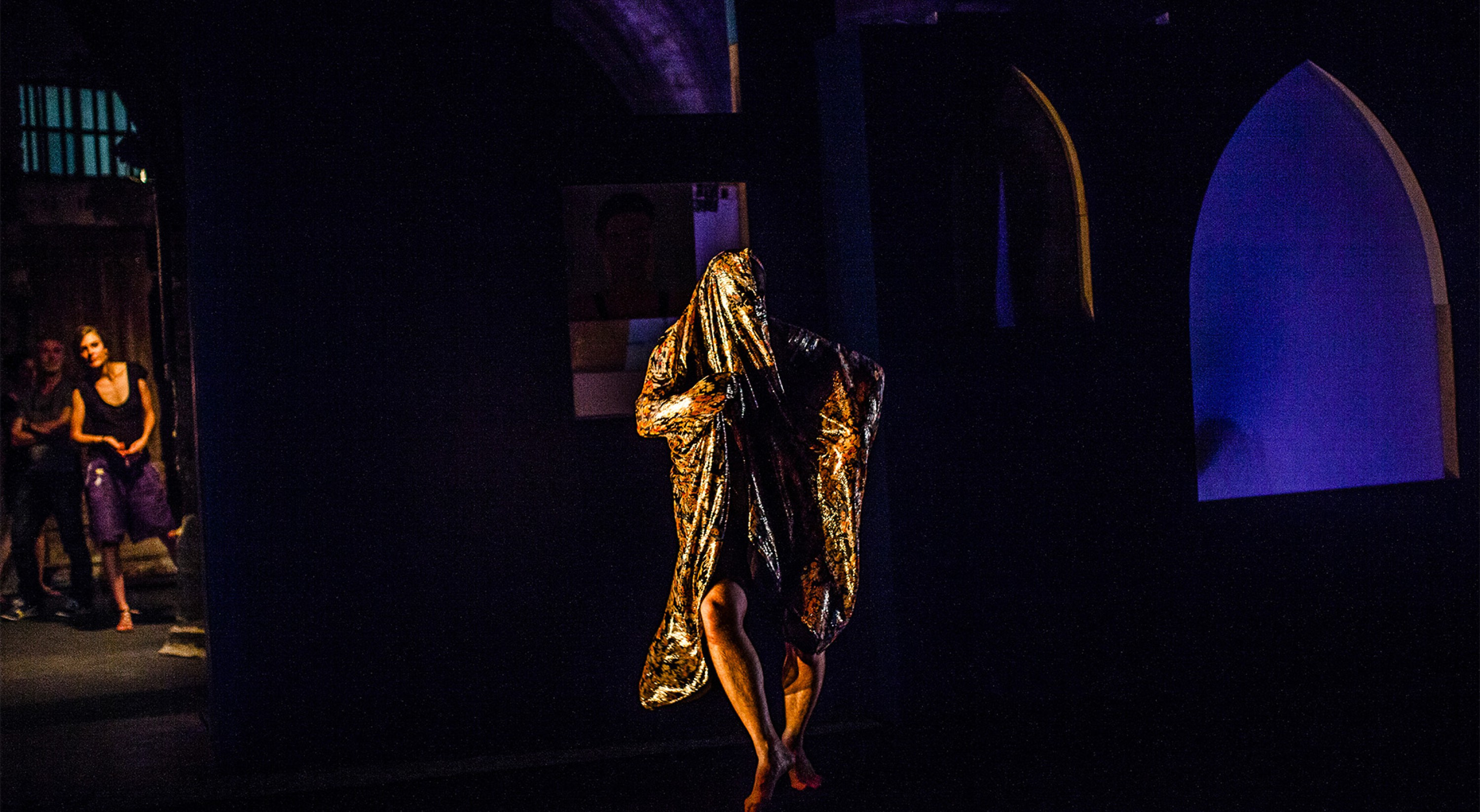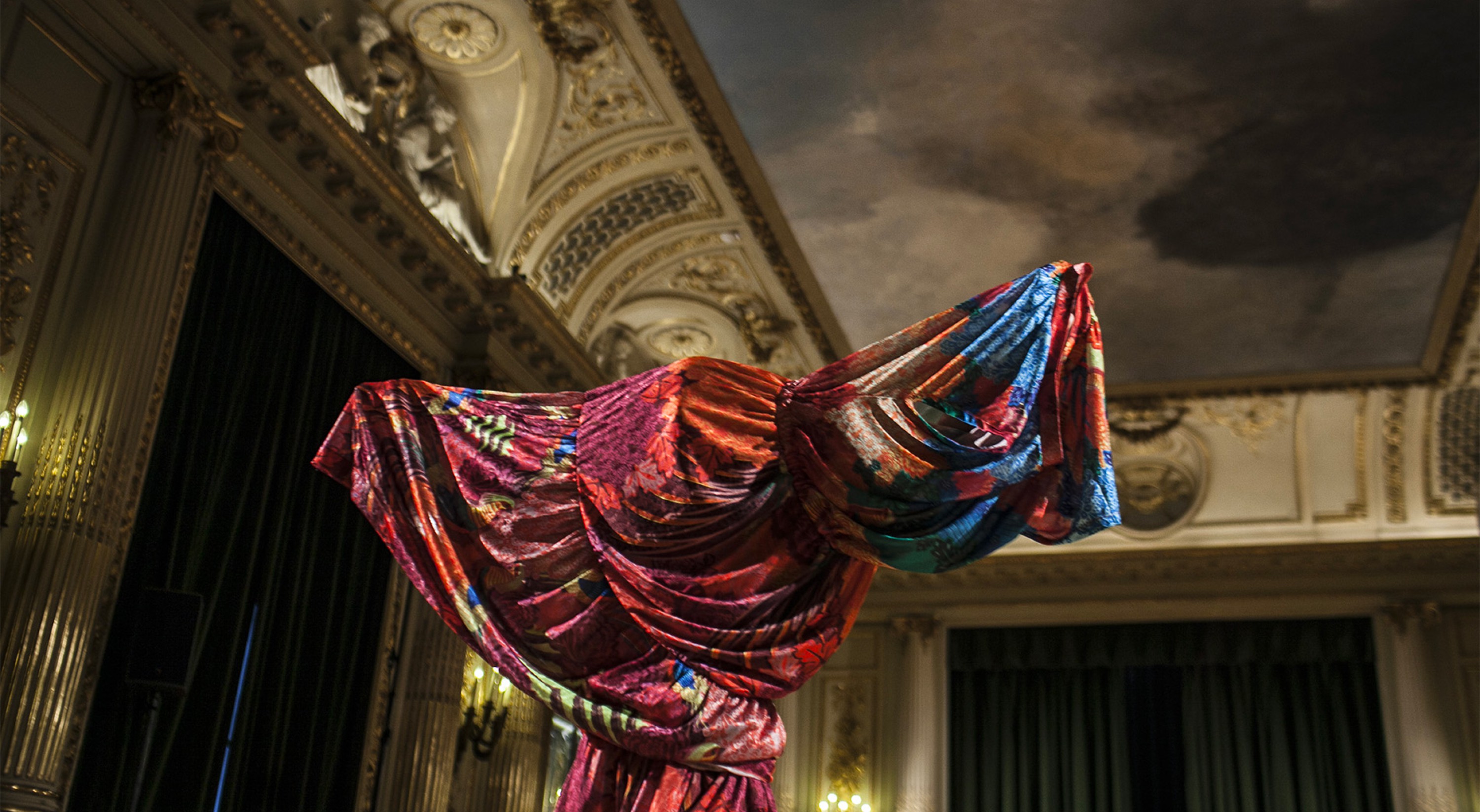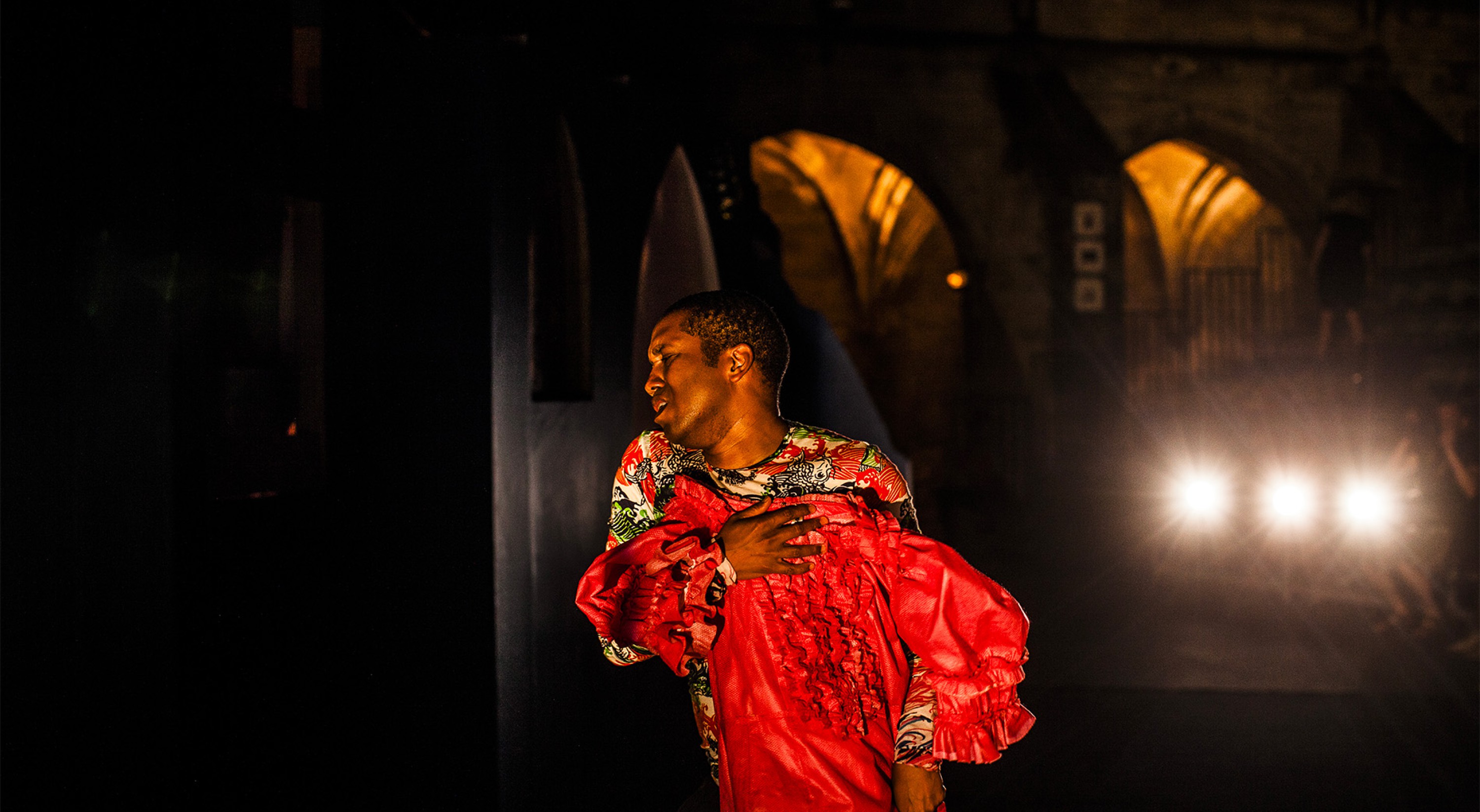Trajal Harrell
Caen Amour
Choreography, Trajal Harrell
Performers, Trajal Harrell, Thibault Lac, Perle Palombe, Ondrej Vidlar, Aristea Boumpaki
Light, Sylvain Rausa
Set design, Jean Stephan Kiss and Trajal Harrell
Soundtrack, Trajal Harrell, the dancers
Dramaturgy, Sara Jansen
Technical director, Santiago Latorre
Costume and stage management, Sally Heard
Produced by Tickle the Sleeping Giant Inc.
Touring production Causecélèbre vzw
Distribution ART HAPPENS
Coproduced by Kampnagel (Hamburg); Festival d'Avignon; Theater Freiburg, Arsenic (Lausanne); Gessnerallee (Zurich); ICA Boston; Kaaitheater (Brussels); productiehuis Rotterdam
The Théâtre Public de Montreuil, Centre dramatique national and the Festival d'Automne à Paris present this performance in co-production
With the support of the Embassy of the United States of America, France
Portrait Trajal Harrell is presented with the support of Dance Reflections by Van Cleef & Arpels
France Culture is a partner of Portrait Trajal Harrell
Caen Amour takes as its central thread the hoochie coochie shows from late 19th century America. The piece uses it to weave a tightly-knit canvas in which dance patterns rub shoulders with a century of imagery, setting up interplay between what is hidden and what is revealed. In his own playful and political way, Trajal Harrell, undertakes a commentary on body states.
Delving into the past to invent a present could be an adequate description of the Trajal Harrell’s method. Over the course of the creations, he strives to scrutinize not just movement but also the history behind it. So it is with the “hoochie coochie”, the dance shows which provide the raw material for Caen Amour. Taking us back to another century, this provocative and sensual genre, not unlike some shows of erotic and folk dancing, is above all the product of a vision which frees itself from from the truth regarding an orientalism which was fashionable at the time. In keeping with his cross-cultural approach Trajal Harrell draws upon different matter in order to question our fantasy-based representations. He brings into being a set, a paperboard carousel, which is inhabited by the performers. Before our eyes, Trajal Harrell shapes a bouquet of dances that reactivates a possible memory. Draped in a veil, plain t-shirt or bare-chested, the soloists keep just the right distance between performance and commentary. Beneath its shimmering adornments, Caen Amour is definitely a reflection on the gaze itself.
See also


